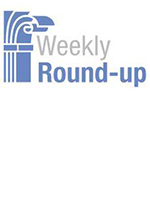
Weekly Roundup: June 22-26, 2020

Michael J. Keegan
Use the pandemic to slow down, deepen your leadership. The pandemic should cause leaders to slow down, notice the good things around them and find opportunities for growth, writes Linda Fisher Thornton. "We need to overcome our own fear and shift into sense-making so that we can guide others," she writes. Leading in Context
Why and How to Become a Helpful Boss | News Break. Joseph Folkman and Jack Zenger were researching resilience when they discovered something about helpfulness. “Helping and serving others reinforces the connection people have with their colleagues, but it also increases our sense of wellbeing and can lower depression.”
Bipartisan House bill would set up a White House cyber director. The legislation would follow the Cyberspace Solarium's recommendation for a Senate-confirmed director to advise the president on cybersecurity policy.
CARES Act delivery hampered by old tech, bad data. Aspects of the federal government's economic response to the coronavirus pandemic were marred by outdated state technology software and a crushing volume of beneficiaries that overwhelmed many systems, according to a new report from the watchdog Government Accountability Office.
John Kamensky
TeleHealth Takes Off. Federal News Network reports: “As the Department of Veterans Affairs canceled and postponed in-person medical appointments, the agency moved mountains to quickly expand its telehealth capacity during the coronavirus pandemic. . . . VA conducted about 2,500 telehealth video sessions daily at the beginning of March. Today, VA is conducting nearly 25,000 sessions — a 1000% increase.”
Updated Budget Projections. The Committee for a Responsible Federal Budget reports: “As a result of the current crisis, debt will likely eclipse the size of the economy this year, a decade earlier than previously projected. . . . The budget deficit will total $3.7 trillion (17.9 percent of GDP) in 2020 and average $1.6 trillion (6.3 percent of GDP) per year from 2021 through 2030.”
Pandemic Spend Tracker. Government Executive reports: “The pandemic oversight committee on Tuesday launched an online tool to track the federal government’s contract spending. . . . The committee is using numbers from the Federal Procurement Data System to track the spending and will update the tracker weekly.”
Pandemic Oversight Report. The Pandemic Response Accountability Committee released its first report on spending under the $2.2 Trillion CARES Act: “Based on the PRAC’s review of submissions by 37 OIGs overseeing agencies involved in the pandemic response, Inspectors General reported a wide range of challenges, including many related to specific agency programs. However, the submissions also reflected areas of common concern among agencies of different sizes and with disparate agency missions.”
Rethinking the Intel Community’s Business Model. DefenseOne reports: “American intelligence needs a new business model that’s better suited to an era of novel threats, abundant information, and changing user preferences. The next generation of national security leaders expects more—more customization, more contribution, and above all, more access.”
Fed Temps for COVID. Federal Times reports: “The federal government has ramped up its hiring efforts in recent months to onboard and shuffle federal employees to respond to the COVID-19 pandemic, but some of those new federal employees will not be sticking around for long.”
COVID Common Operating Picture. FedScoop reports: “The Department of Health and Human Services changed the way it conducts business so it could rapidly develop its system for providing a common operating picture on the coronavirus pandemic. . . . HHS Protect launched April 10 and currently collects more than 200 data sets from every state and territory, 6,146 hospitals, commercial and public health labs, and 80% of private hospital labs.”
Streamlining NSF Grants Process. FedScoop reports: “NSF had to create a more modern front-end process to better connect with [the small business] community. . . A quick submission portal that sits in front of FastLane catered to entrepreneurs and startups, who, if they are a good fit, get an official invitation from NSF to submit a full proposal and help along the way.”
NZ’s whole of government response to COVID. Steve Kelman writes in FCW that the New Zealand government: “during the crisis a whole bunch of government employees started doing work not in their job descriptions. To hear Wilson tell the story, getting these other agencies to pitch in was not so hard. The crisis was one that required a whole-of-government response, so parochial resistance was minimal.”
The “Next Normal” in States and Localities. RouteFifty reports: “The Covid-19 pandemic forced local government officials to quickly pivot their operations—facilitating remote work, changing the way staffers interact with residents and utilizing technology to deliver a host of municipal services that are normally handled in person. . . . . Will those changes be permanent? What’s worked for local governments, and what hasn’t? And what happens next?”
* * * * * * *
Next Week on The Business of Government Hour: A Conversation with Stephen Sanford, Director, Center for Strategic Foresight, U.S. Government Accountability Office (GAO). What is strategic foresight? How can strategic foresight help government leaders be more effective? What is the mission of the GAO’s Center for Strategic Foresight? Join host Michael Keegan as he explores these questions and more with Steve Sanford, Director, GAO's Center for Strategic Foresight on the next The Business of Government Hour.
Broadcast Schedule: The show airs Monday at 11 a.m., and Friday at 1 p.m. on Federal News Network 1500AM WFED
Anytime, Anywhere on...

https://www.podcastone.com/the-business-of-government-hour

https://itunes.apple.com/us/podcast/the-business-of-government-radio-hou



